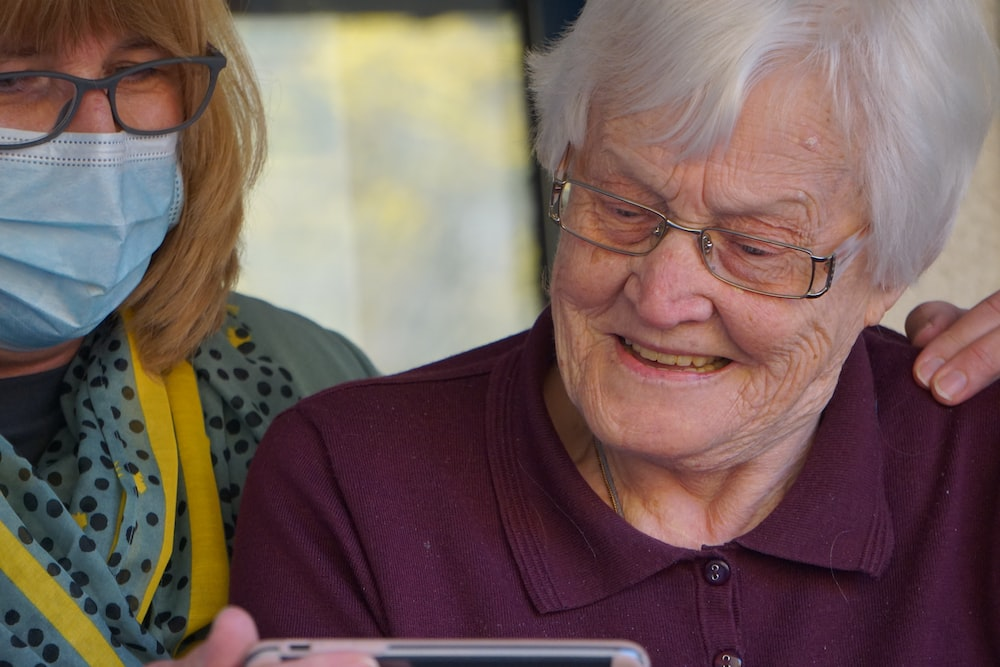Traumatic Brain Injury (TBI) is a pervasive and often invisible battle, affecting over 1.5 million individuals annually in the United States. This silent epidemic doesn’t discriminate; it impacts people of all ages, backgrounds, and walks of life.
However, in this narrative, we shift our focus to a group often overlooked: seniors. As we explore the challenges and triumphs of living with TBI, our spotlight will be on the compassionate realm of home care, where healing and resilience are nurtured. So, without further ado, let’s get started:
1. Causes of TBI in Seniors

When it comes to Traumatic Brain Injury (TBI) in seniors, one striking statistic dominates the landscape – falls account for a significant 49% of cases. The vulnerability of aging bodies to the repercussions of even seemingly minor accidents underscores the critical importance of understanding the multifaceted causes that contribute to TBI in this demographic.
· The Delicate Interplay of Aging Bodies
The intricate interplay of aging bodies forms the backdrop of TBI causes among seniors. As we age, bones become more fragile, and reflexes tend to slow down. This delicate dance of physiological changes creates an environment where a simple misstep or loss of balance can lead to catastrophic consequences. Understanding the delicate nature of these changes is crucial to grasping the heightened susceptibility of seniors to TBI.

· Falls Beyond the Surface: Unraveling the Intricacies
While falls are the apparent cause, delving deeper reveals a myriad of factors contributing to TBI among seniors. Environmental hazards at home, such as slippery floors or poorly lit areas, amplify the risk. The presence of chronic health conditions, including osteoporosis and arthritis, further complicates the scenario. Prescription medications, known for their side effects like dizziness or drowsiness, add another layer to the intricate web of causes.

2. Navigating the Psychological Impact Beyond the Physical Fall
It’s imperative to recognize that TBI in seniors transcends the physical fall. The psychological impact of such incidents can manifest in fear and anxiety, leading to a potential decrease in physical activity and social engagement. Similarly, depression, anxiety, and the psychological toll on both the patient and their caregivers require special attention and tailored interventions.These behavioral changes, if left unaddressed, create a cycle that further contributes to the risk of falls, and affecting mental health, emphasizing the need for holistic care approaches for peope living with TBI.

3. The Invisible Epidemic: Unmasking the Full Human Cost of Traumatic Brain Injury
For approximately 5.3 million Americans estimated to be grappling with TBI-related disabilities, the financial toll is just one facet of the burden they bear. The enduring impairments and disabilities associated with Traumatic Brain Injury (TBI) are profound, with an incalculable human cost. Unlike overt injuries like a broken leg, the challenges stemming from TBI are often hidden, earning it the moniker of the “invisible epidemic.” These disabilities, rooted in cognitive, emotional, sensory, and motor impairments, wield a transformative impact on vocational aspirations and cast enduring shadows on social and family relationships.
Approximately 5.3 million individuals in the United States are grappling with disabilities resulting from Traumatic Brain Injury (TBI), and the financial toll is just one element of their struggles. The enduring challenges (both disabilities and impairments) linked to TBI are profound, with an immeasurable human cost. Unlike more apparent injuries, such as a broken limbs, the difficulties arising from TBI often remain hidden, earning it the label of the “invisible epidemic.” Rooted in emotional,cognitive, motor, as well as sensory impairments, these challenges wield a transformative impact on various aspects of life including career aspirations and casting enduring shadows on family and social relationships.

4. The Alarming Rise: Statistics and Realities of Traumatic Brain Injury
Before delving into the intricacies of living with TBI, it’s crucial to comprehend the scale of this issue. With a staggering 1.5 million cases reported annually in the United States, TBI is a significant public health concern. Deciphering trends in traumatic brain injuryand understanding the demographics, causes, and outcomes is the first step in addressing the multifaceted challenges associated with this condition.
· Unveiling the Impact of TBI: The Imperative of Holistic Surveillance
In assessing the comprehensive impact of Traumatic Brain Injury, it becomes imperative to extend our measurement beyond mere financial costs.
Integrating surveillance systems based in emergency departmentsand data derived from hospitalization admissions provides a more nuanced understanding of TBI services’ necessity and the tangible reductions achieved through successful prevention efforts.

· The Crucial Role of Follow-Up Registries: Enhancing Insight for Holistic Care
Follow-up state registries that are built utilizing robust surveillance systems, offer invaluable insights that empower communities and state officials to not only design, but execute, and assesscost-effective initiatives tailored for individuals (and their families) struggling with TBI.
These efforts cover various support areas, including vocational rehabilitation, community support, and school assistance.
· Unraveling the Layers: The Role of Registries in Identifying Disabilities and Needs
These registries play a pivotal role in identifying the types and frequency of disabilities associated with TBI. By doing so, they become instrumental in assessing the need for both public health services (such as treatment for alcohol abuse or depression) and social services (ranging from job training to marital counseling) for individuals affected by TBI.
These registries are crucial in pinpointing the varieties and occurrence rates of disabilities linked to Traumatic Brain Injury. Consequently, they play a vital role in evaluating the necessity for various health services for public (like addressing depression, anxiety management, or alcohol abuse) as well as social services (spanning from vocational training for jobs, and counseling for marital issues) for individuals impacted by TBI.
5. Mapping the Trajectory: Understanding the Relationship between Injury Severity and Long-Term Outcomes
These registries shed light on a crucial aspect: the connection between the severity of a TBI at the onset and its long-term results. This comprehension serves as a cornerstone in recognizing individuals in need of continuous rehabilitation, medical, and additional support services.By delving into this relationship, registries pave the way for more informed and targeted interventions.
6. The Silent Struggle: Recognizing Symptoms and Complications
Living with TBI involves navigating a myriad of symptoms, from cognitive challenges like memory loss and difficulty concentrating to physical issues such as headaches and fatigue. These symptoms not only affect the individual directly but also have far-reaching consequences for families who become unintentional caregivers. We’ll explore the silent struggle of TBI, shedding light on the complications that extend beyond the injured individual.
7. Day-to-Day Challenges: Navigating a Changed Reality

The aftermath of a traumatic brain injury (TBI) transcends the immediate physical impact, delving deep into the very fabric of daily life. Mundane tasks that were once carried out with ease metamorphose into arduous endeavors. For example:
- In this altered reality, dressing oneself becomes a daily battleground, a once-simple routine now laden with intricate challenges.
- The act of cooking, once a source of comfort and creativity, transforms into a constant threat of potential hazards, demanding heightened attention and caution.
- Even the most personal acts of hygiene become uphill battles, demanding a level of focus and coordination that was once second nature.
- The palpable frustration stemming from lost independence echoes through each struggle. Tasks that were once markers of self-sufficiency now necessitate assistance, eroding the autonomy that was previously taken for granted. This frustration is not merely a fleeting emotion; it’s a constant companion in the journey of redefining normalcy.
Yet, within the daily battles, there exists a transformative process of rebuilding and redefining. It’s a journey of discovering new approaches to old tasks, embracing adaptive strategies, and celebrating small victories that carry profound significance. The resilience required is not just about survival; it’s about evolving into a version of oneself that is empowered by the strength forged in the crucible of adversity.
8. Empowering TBI Prevention and Aftercare: Some Effective Strategies
Understanding the intricacies of TBI causes in seniors is not merely an academic exercise but a foundation for crafting effective prevention and care strategies. Interventions must extend beyond the immediate aftermath of a fall to address the root causes. This involves home modifications to eliminate hazards, regular health check-ups to manage chronic conditions, and meticulous medication management to mitigate side effects. Here are some more information on practical and effective strategies forTBI aftercare and prevention:
· The Role of Reliable Data in Effective Programs
To implement more effective prevention programs, reliable data on the causes and risk factors of TBI are paramount. State surveillance systems serve as invaluable tools in providing such data. They not only identify trends in TBI incidence but also enable the development of cause-specific prevention strategies, targeting populations at the greatest risk. Additionally, these systems serve as vigilant monitors, evaluating the effectiveness of implemented prevention programs over time.In essence, measuring trends in TBI goes beyond statistical analysis; it is a dynamic process that involves understanding the multifaceted nature of these injuries.
· Community Engagement and Education: Building a Safety Net
Preventing TBI in seniors requires not only individual efforts but also community-wide engagement. Educational programs on fall prevention, easily accessible resources on creating safe home environments, and community initiatives fostering active and healthy aging contribute to building a robust safety net. Empowering both seniors and their communities with knowledge becomes a cornerstone in the collective effort to reduce TBI incidence.
· Compassionate Home Care: A Ray of Hope in the Darkness
In the journey of living with TBI, one crucial element emerges as a beacon of hope – private care for the elderly at home. Recognizing the unique needs of TBI patients, private caregivers offer personalized assistance, creating an environment that promotes healing and comfort.Beyond administering medication and aiding in physical tasks, caregivers for elderly at home become emotional pillars. The relationships formed in the caregiving process become a source of strength, illustrating the profound impact of compassionate care.
· Synergy Home Health: Bridging the Gap Between Medical and Emotional Support
Synergy Home Health is at the forefront of revolutionizing home care for TBI patients. Their holistic approach integrates medical expertise with emotional support, acknowledging that healing goes beyond physical recovery. This synergy becomes a lifeline for both the individual and their family, fostering an atmosphere of understanding and resilience.

· Assisted Living Homes: Finding Comfort in Familiar Surroundings
For many TBI patients, the familiarity of home provides solace. Assisted living homes offer a middle ground, combining the safety and support of professional care with the emotional comfort of one’s own space. This innovative approach bridges the gap between medical necessity and the importance of a familiar environment. But that’s not all. Assisted living for TBI patients offers a setting where individuals can regain a sense of community that fosters emotional support and camaraderie among those with shared experiences, facilitating a more robust recovery journey.

· 24-Hour Nursing Care at Home: Ensuring Round-the-Clock Support
The challenges of TBI don’t adhere to a schedule. Recognizing this, the availability of 24-hour nursing care at homebecomes a lifeline for both the patient and their family. Knowing that trained professionals are ready to assist at any hour provides a sense of security that is invaluable in the journey of TBI recovery.
Especially since the the severity of TBI varies, some cases may necessitate more extensive care. Exploring nursing homes for TBI patients becomes integral, highlighting the balance between maintaining independence and receiving the professional care required for a comprehensive recovery.
· Structured Family Care Giving Program: Fostering Connection in Care
The importance of a structured family caregiving program cannot be overstated. It not only supports the patient but also provides a framework for family members, ensuring that the caregiving journey is a collaborative effort. This structure becomes the backbone of resilience, fostering a sense of unity in the face of adversity.
· Medicaid Services for Disabled: Breaking Financial Barriers
The financial strain of TBI can be overwhelming. Medicaid services for disabled individuals become a crucial resource, offering financial support for necessary medical care and home assistance. Breaking down economic barriers ensures that quality care is accessible to all, regardless of financial constraints.
King’s Grace Homecare – Nurturing Healing, Embracing Hope
In the intricate tapestry of TBI recovery, King’s Grace Homecare stands out as a symbol of compassion and excellence. Our commitment to personalized care, integration of medical expertise with emotional support, and dedication to fostering healing relationships make us a guiding light in the journey of living with TBI.
As we navigate the challenges and triumphs of TBI at home, let King’s Grace Homecare be the ally that turns adversity into opportunity, ensuring that every individual can truly live beyond trauma. Get in touch with us today and learn how we can help improve the quality of life for TBI patients.


